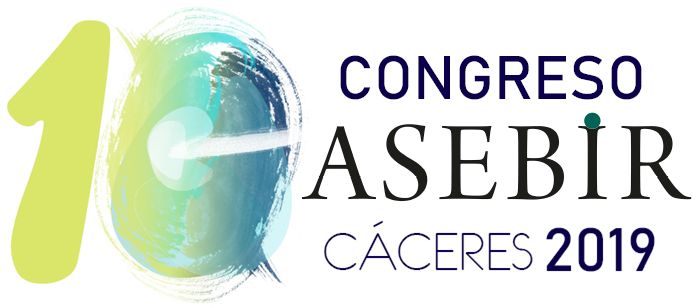Nine pieces of Instituto Bernabeu research work at the Association for the Study of Reproduction Biology (ASEBIR) Congress held in Cáceres
21-11-2019

Once again this year, Instituto Bernabeu attended the Association for the Study of Reproduction Biology (ASEBIR) Congress. It was held in Cáceres from 23rd to 25th October 2019. Nine items of research work performed by the Embryology Unit and the Molecular Biology and Genetics Department were presented at the national congress. It is the most significant congress of its kind in the field of reproduction biology.
The clinic participates in this scientific event every year. On this occasion, Dr Jorge Ten, Director of the Embryology Unit at Instituto Bernabeu and leader of a team of experts from Instituto Bernabeu, attended the event. Molecular biologists and human reproduction biologists were also present.
Two of the research projects were presented as oral presentations. One of them was about oocyte vitrification and understanding if it affects aneuploidy and mosaicism rates in blastocysts. The other project demonstrates that mosaic segmental aneuploidies in blastocysts do not affect the results of PGT-A cycles.
The research projects that were presented:
- ¿La vitrificación de ovocitos afecta las tasas de aneuploidía y de mosaicismo en los blastocistos? F. Lozano, R. Morales, B. Lledó, JA. Ortiz, L. Cascales, L. Herrero, J. Ll. Aparicio, R. Bernabeu. Comunicación oral.
- Las aneuploidías segmentarias en mosaico en blastocisto no afectan a los resultados de los cliclos de PGT-A. B. Lledó, R. Morales, JA. Ortiz, E.García-Hernández, D. Rodríguez, J. Ll. Aparicio, A. Bernabeu, R. Bernabeu. Comunicación oral.
- ¿Puede el proceso de estimulación ovárica modificar el riesgo de aneuploidías y mosaicismo en los embriones? A. Cascales, JA. Ortiz, R. Morales, F. Lozano, B. Lledó, J. Ten, J. Ll. Aparicio y R. Bernabeu.
- ¿Qué factores influyen en que una transferencia sea exitosa? Leyre Herrero, L. Cascales, M. Aparicio, R. Romero, A. Llaneza, J. Ten, R. Bernabeu.
- ¿Influye el número de ovocitos recuperados tras punción ovárica en la calidad embrionaria en cultivo largo? N. Ruiz, I. Ochando, J. Ten, J.A. Ortiz, L.Luque, M.A. López, R. Bernabeu.
- ¿Qué parámetros pueden afectar a la morfología y a la resistencia de la membrana ovocitaria durante la microinyección? A. Rodríguez-Arnedo, M. Herreros, N. Diaz, J. Ortiz, MC. Tió, L. Martí, J. Guerrero, J. Ten, R. Bernabeu.
- El uso de probióticos podría mejorar los resultados en los tratamientos de reproducción asistida modulando el patrón de microbioma vaginal. M. Díaz, B. Lledó, J. Ortiz, P. Lozano, V. Ruiz, J. Ten, J. Ll. Aparicio, A. Bernabeu, R. Bernabeu.
- ¿Merece la pena mantener en cultivo los ovocitos con fallo de fecundación o fecundación anómala? M. Aparicio, L. Herrero, L. Cascales, R. Romero, J. Ll. Aparicio, J. Ten, R. Bernabeu.
- Efecto del factor masculino en el mosaicismo embrionario. EM. García- Hernández, B. Lledó, J. Ortiz, R. Morales, A. Fabregat, J. Guerrero, J. Ll. Aparicio, R. Bernabeu.
